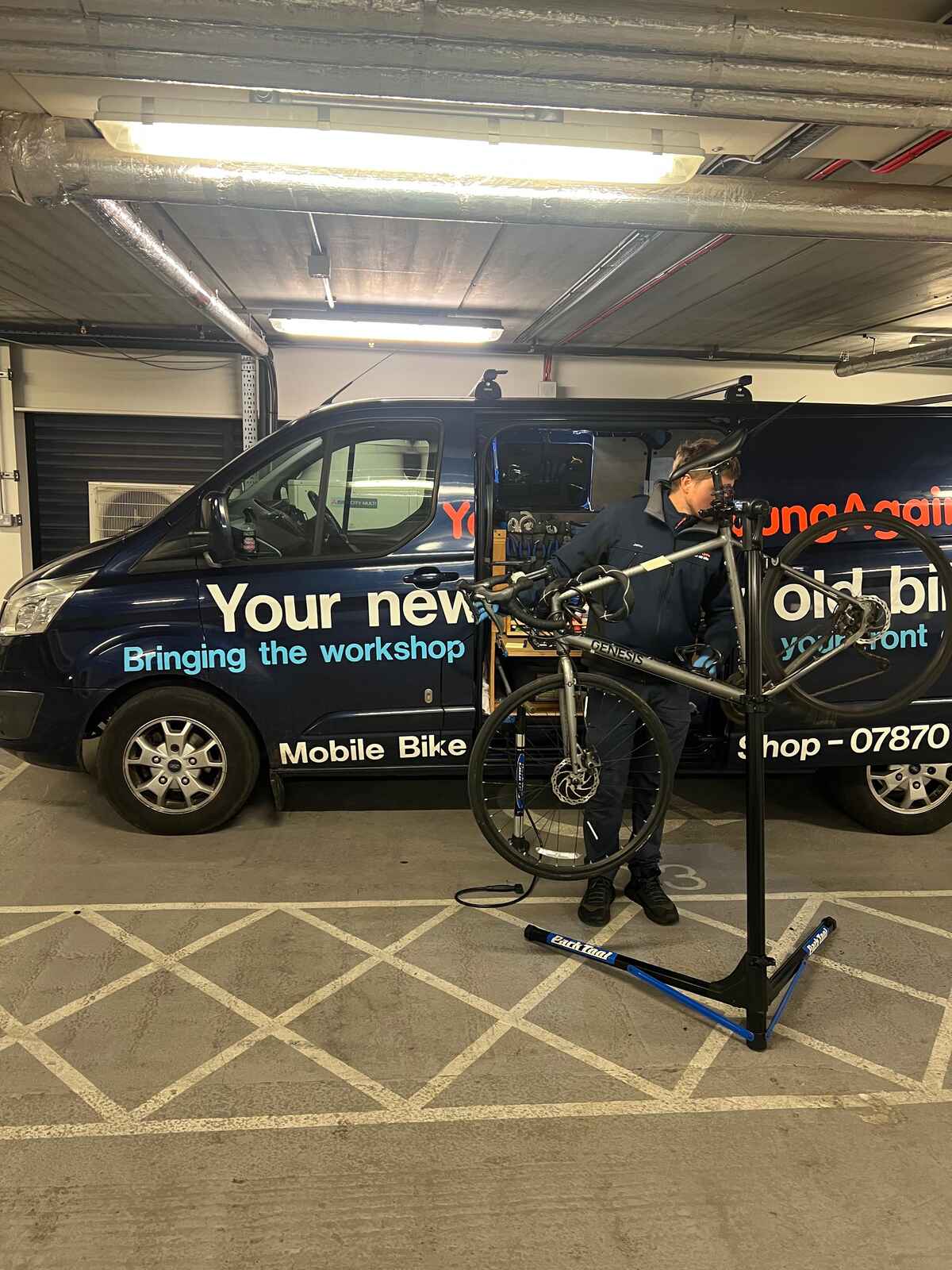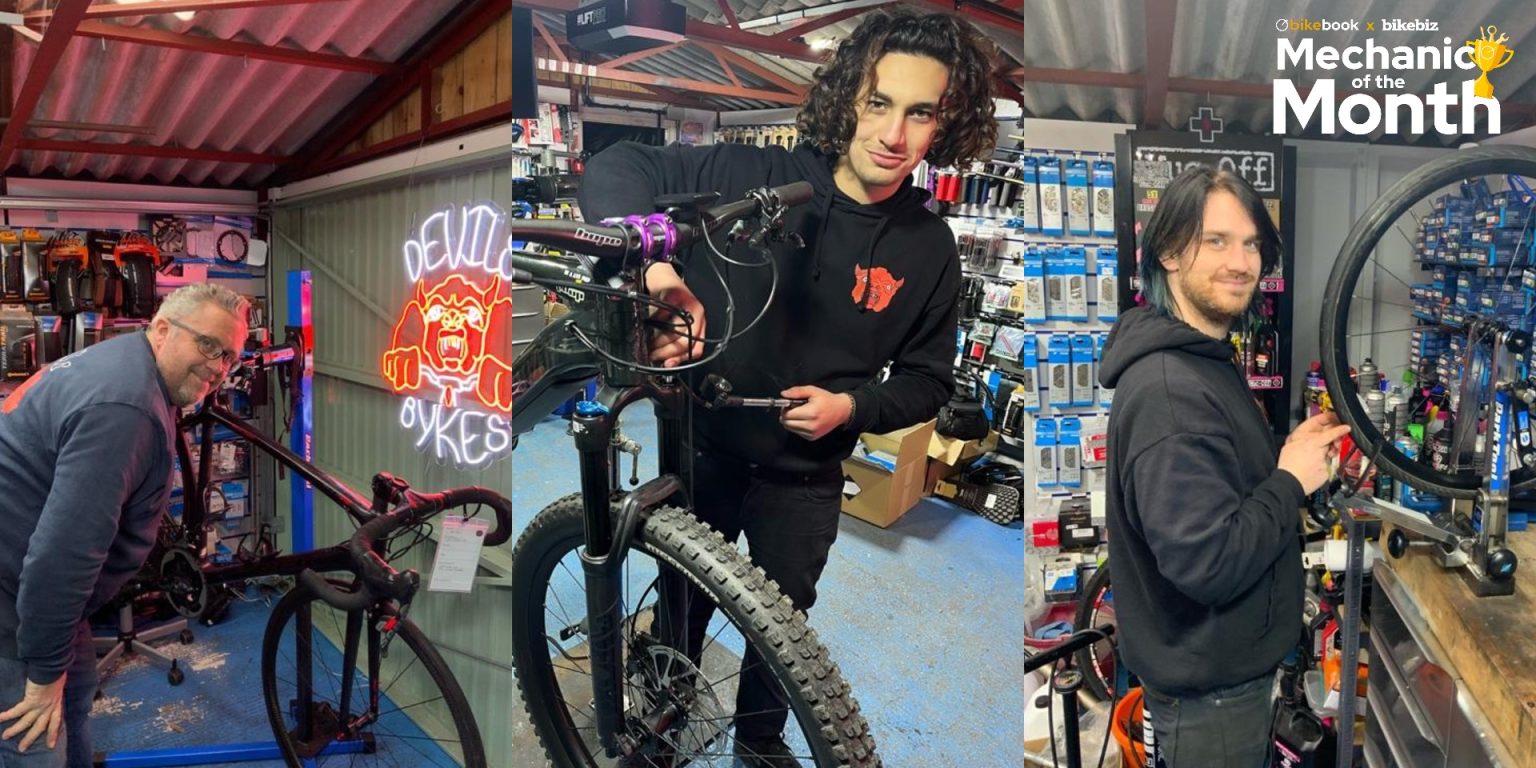December 27, 2025
•
8 minute read
Comprehensive Guide: Choosing The Best Bike Repair Shop Software
You own a bike repair shop, brimming with potential but struggling with manual tasks that are driving you mad.
Jake Fieldsend
Founder & CFO
You own a bike repair shop, brimming with potential but struggling with manual tasks that are driving you mad. You've heard about bike repair shop software, but the sheer volume of choices and features makes your head spin. Let's cut through the noise and find out exactly which software will transform chaos into clarity for your unique business needs. We'll cover why you need it, how a platform like Bikebook can streamline your operations, and essential features that will have you wondering how you ever managed without them.
1. Choosing the Right Bike Repair Shop Software
1.1 Why Do You Need Specific Software for Your Bike Repair Shop?
Running a bike repair shop without dedicated software is like trying to fix a bike with just a spoon—it’s technically doable, but painfully inefficient. Dedicated software addresses the chaos of day-to-day operations by offering:
- Organised Scheduling: Manage bookings and avoid double bookings.
- Effortless Inventory Management: Track parts efficiently to keep the right stock levels.
- Centralised Customer Data: Easily access past service records and tailor your services.
Consider the struggle of sifting through piles of paper receipts or the chaos of a cluttered whiteboard schedule. With a platform like Bikebook, you can drastically reduce errors and enhance productivity. This makes it invaluable to mechanics who prefer to spend time fixing bikes rather than drowning in paperwork. Imagine saving hours each week on administrative tasks and directing that time into honing your craft.
Pro-tip: If you're still using pen and paper, start logging common issues and parts used. This small data collection step will make the digital transition smoother later.
1.2 How Can Bikebook Streamline Your Workshop Management?
Using Bikebook can transform your workshop from hectic to harmonious. Here’s how it contributes to a more efficient workflow:
- Streamlined Booking Processes: No more back-and-forth emails or calls. Customers book directly via the online system.
- Automated Reminders: Built-in notifications reduce no-shows and ensure customer engagements.
- Comprehensive Inventory Tools: Track parts usage in real time, reducing the risk of stockouts.
Imagine having a clear insight into every aspect of your workflow, from customer appointments to the exact number of derailleur hangers in stock. Bikebook centralises this information, leading to faster decision-making. It's particularly handy when managing high-volume periods where precision becomes a make-or-break factor for customer satisfaction.
Pro-tip: Implement the inventory alerts feature promptly to avoid unpleasant surprises when reordering is overdue.
1.3 What Features Should You Look For?
Selecting the right software isn't just about ticking boxes—it's about understanding what will genuinely benefit your business. Prioritise these features when choosing your software:
- User-Friendly Interface: Ensures all team members can utilise the system efficiently without extensive training.
- Customisation Options: Allows tailoring features to suit your unique business needs.
- Robust Reporting Tools: Provides insights into sales trends, service patterns, and operational bottlenecks.
Real-world example: A repair shop using robust reporting tools may discover that most repairs are minor services. This insight could drive marketing efforts towards promoting major service checks, thereby increasing revenue.
User reviews and free trials can be invaluable at this stage. They offer a glimpse into how the software performs in real-world scenarios, helping you make informed decisions. With the right combination of features, you’re well on your way to enhanced productivity and increased profits.
Pro-tip: Before committing, request a demo session with the software provider to see firsthand how it matches your shop's processes and addresses specific pain points.
2. Implementing Bike Repair Shop Software
2.1 Step-by-Step Guide to Setting Up Your System
Setting up a new bike repair shop software can be straightforward if you approach it methodically. Here's a step-by-step guide that you might find useful:
- Evaluate Your Needs: Start by identifying what processes you want to automate or improve. This could include inventory management, billing, or customer bookings.
- Select the Right Software: Choose software like Bikebook that's compatible with your business model. Ensure it offers features you prioritise, like inventory tracking or appointment scheduling.
- Hardware Setup: Depending on your choice of software, you might need new hardware like a tablet or a barcode scanner. Make sure these devices are compatible with your software.
- Install and Configure: Follow the software's installation guidance. Customise it to your shop’s specific needs—set up user accounts, input your current inventory, and integrate any payment systems.
- Data Migration: If shifting from another system, migrate your current data and test to ensure everything works seamlessly.
- Test the System: Run a few test transactions to familiarise your staff with the new system. Identify any issues and resolve them early.
Pro-tip: Start small. Implement the system in phases to ensure everything runs smoothly and staff are comfortable with each module before adding more.
2.2 Integrating Bikebook with Other Tools
Integration is crucial if you want to ensure smooth business operations. Here’s how you can integrate Bikebook effectively:
- CRM Integration: Connect Bikebook to your existing Customer Relationship Management (CRM) system to maintain a centralized database of customer information. This improves service as your staff can access customer histories and preferences quickly.
- Inventory Management Tools: Use Bikebook to sync with tools like Vend or Lightspeed for real-time inventory updates. This helps maintain stock levels, alerts you about shortages, and streamlines reordering processes.
- Accounting Software: Linking Bikebook with accounting software, such as Xero or QuickBooks, automates financial tracking, reduces manual data entry, and minimises errors in your financial reports.
- Appointment Scheduling Apps: Integrate with platforms like Google Calendar to automatically update your appointments and notifications, ensuring everyone is on the same page.
Pro-tip: Regularly check integrations for compatibility updates to keep systems running in sync without glitches.
2.3 Training Your Team on New Software
Training is vital for a smooth transition to any new system. Keep these steps in mind for educating your team on your new Bikebook software:
- Create a Training Schedule: Structure sessions in stages, focusing on one software feature at a time. This avoids overwhelming your team with information.
- Hands-On Practice: Develop scenarios and role-play exercises for various shop processes like managing bookings or processing payments to ensure practical know-how.
- Vendor Support: Take advantage of Bikebook’s support resources such as online tutorials or customer service for detailed guidance on unclear elements.
- Feedback Loop: Encourage your team to provide feedback. They might spot issues you’ve overlooked, or suggest improvements in the training process.
- Continuous Learning: Training shouldn’t be a one-time event. Plan regular refresher courses to cover updates in system features or procedures.
Pro-tip: Pair less tech-savvy staff with more knowledgeable members. This peer mentoring can ease apprehensions and provide on-the-spot support.
3. Maximising the Benefits of Your Bike Repair Shop Software
3.1 Using Bikebook to Enhance Customer Satisfaction
Imagine your customers walking into your shop, greeted by a system that remembers their last repair needs and offers new services just when their bikes need a tune-up. With Bikebook, you can better predict service intervals, making it easy for your customers to book their next appointment. Tracking previous interactions within the platform means you can personalise service recommendations, leading to a tailor-made customer experience. Here's how you can leverage the system:
- Engage Automatically: Use automated email reminders for upcoming services.
- Personalise Offers: Tailor-make service packages based on historical data.
- Feedback Collection: Implement post-service surveys to boost satisfaction rates.
Pro-tip: Integrate a feedback loop within Bikebook to identify trends in customer suggestions, refining your service offerings for constantly improving customer satisfaction.
Additionally, happy customers are more likely to leave positive reviews. Encourage your staff to use Bikebook's built-in features to request reviews from contented clients on platforms like Google or Trustpilot. This not only builds credibility but organically boosts your business's online presence.
3.2 Strategies for Managing Bookings and Workflow Efficiently
Running an organised bike repair shop can be chaotic without proper management of bookings and workflow. Enter Bikebook: it solves the chaos by allowing bike shops to efficiently manage resources and staff schedules. Once implemented, you'll experience:
- Enhanced Scheduling: Manage appointments with calendar integrations.
- Real-Time Updates: Gain real-time access to job progress and inventory status.
- Streamlined Communication: Send automatic appointment reminders via email or SMS.
Pro-tip: Set up automatic alerts for your team when a new booking is made, so no tasks fall through the cracks.
Using Bikebook ensures that every booking aligns seamlessly with your shop's capacity and staff availability, making overbookings a thing of the past. This clear organisational strategy improves turnaround times and enhances overall workflow efficiency.
3.3 Analysing Data to Grow Your Business
Data is king, especially for growing your bike repair business. Bikebook facilitates data collection and analysis, allowing you to make informed decisions. Here's how you can unlock insights:
- Customer Analytics: Discover top service demands through data.
- Performance Metrics: Track technician efficiency and job profitability.
- Inventory Insights: Monitor stock levels to prevent delays in service.
Pro-tip: Utilise monthly reports from Bikebook to identify peak service periods and adjust your marketing efforts accordingly.
By regularly reviewing the analytics provided by Bikebook, you can optimise operations, adjust staffing during peak times, and ensure your inventory matches market demand. This proactive approach leads to improved service delivery and, ultimately, a more profitable business model.
In conclusion, choosing the right bike repair shop software like Bikebook is a strategic move towards improved management and increased customer satisfaction. With features tailored for efficiency and data-driven insights, you can transform your workshop into a career-defining enterprise. Want to see how our platform could simplify your shop operations?
Explore more about enhancing your bike workshop management with Bikebook's features here.



